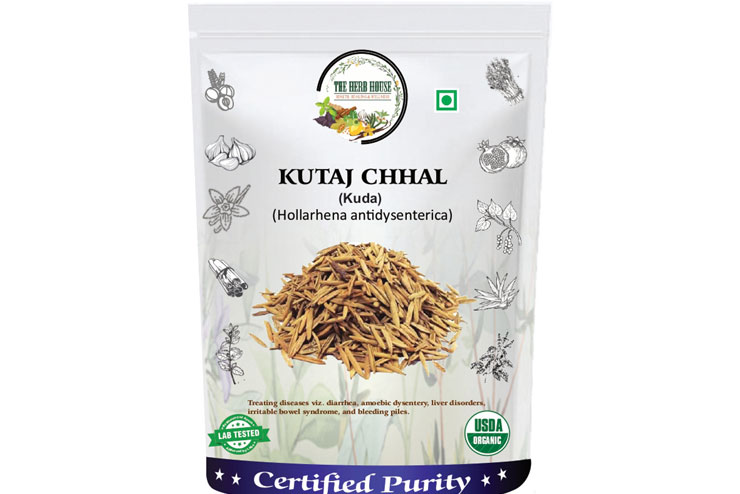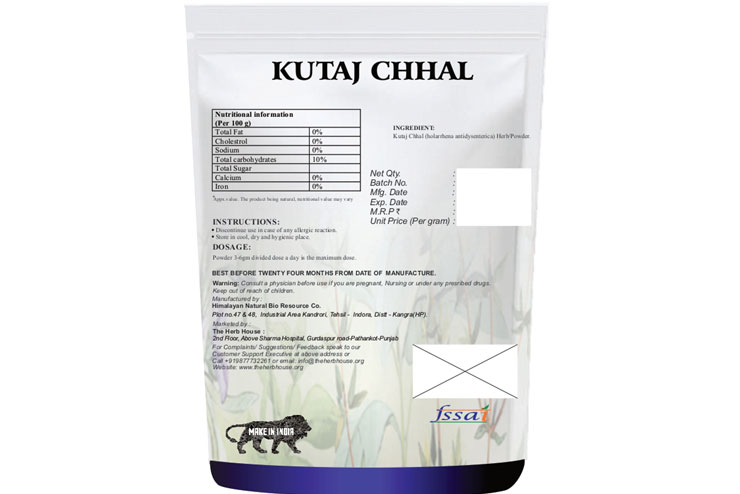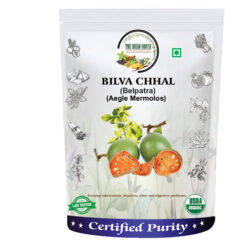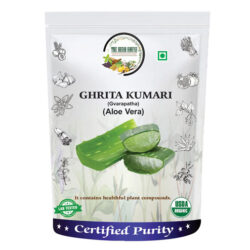Description
The shrub Holarrhena antidysenterica Linn (Family Apocynaceae), also known as ‘Indrajav’, ‘Coneru’ in English, and ‘Kutaja’ in Sanskrit, is found throughout India up to a height of 4,000 feet. In India, especially in the Himalayan ranges, the plant is prolific. In India, Kutaja has traditional and folklore values. For example, people in the Indian state of Odisha offer this plant’s leaves together with rice during the ‘Nabanna’ celebration.The plant can be found in Asia and Africa’s tropical and subtropical climates. The tree blooms in May-July in Burma, Sri Lanka, Pakistan, Nepal, and Africa. It can be found all over India, particularly in the deciduous forests of the tropical Himalayas, ranging from altitudes 900 to 1250 meters. Kutaja, clad by the vernacular names Vatsaka, Girimallika, Kalinga, Shakshaki, Indra, Yavphal, Virishak, and Panduindra is the main ingredient of this formulation.
Kutaja being a deciduous plant grows at a lower altitude. It has broad, oval, bipinnate leaves arranged oppositely on the stalk and white five-petalled corymbose cymes. The fruits of this herb are mostly paired and cylindrical in shape.
Although the entire plant has therapeutic benefits, the bark which is rough, pale and brownish-black in colour, has steroidal alkaloids that show potent anthelminthic, astringic, amoebicidal and diuretic activities and holds high significance in treating dysentery, diarrhoea and gastric ailments. It also holds high significance in treating bleeding piles, herpes, liver and heart problems.
The flower, fruit and seeds of this plant apart from being used for diarrhoea are also useful for treating skin diseases, nausea, vomiting, gout, fever, abdominal pain and various types of worm infestations in the body.Kutaja is by far one of the few plants which have two separate types i.e. the male Kutaja plant or Pum Kutaja and the female Kutaja plant which is the Stri Kutaja.The Pum Kutaja is Holarrhena antidysenterica which is also known as Krishna Kutaja and is the main ingredient used in this formulation for treating diarrhoea.It has Tikta (i.e. bitter) and Kashaya (i.e. astringent) rasa (i.e. taste) and shows Laghu (i.e. light) and Rukhsha (i.e. dry) guna (i.e. quality). It also shows Shita virya (i.e. cold potency) and Katu vipaka (i.e. pungent after digestion). It is a potent herb that pacifies Kapha and Pitta Doshas. Although used mainly for dysentery, the active alkaloidal ingredients conessine and conimine also protect the body from shigellosis, a bacterial infection caused due to the Shigella bacteria. It also prevents intestinal infections caused due to Acinetobacter baumanni. The Kutaja herb when taken with nishoth powder (i.e. Operculina turpenthum) effectively removes AMA toxins from the body and prevents kidney stones and renal diseases. The bark of this plant is also effective in treating gout and herpes.
Some of the common names of Kutaja are Bitter Oleander, Tellicherry Bark, Connessi Bark, Dysentery Rose Bay, and Kurchi Bark. 2) What are the traditional uses of Kutaja? Kutaja has long been used to manage diarrhoea, dysentery, and has anti-inflammatory, antioxidant, and anti-malarial effects.
How to Use Kutaja?
Kutaja is used in different forms like:
- Seed powder
- Bark powder
- Kutaja kwatha
- Kutaja Parpati Vati, and herbal food supplements
- Your physician will prescribe you the appropriate dosage based on your individual needs.







Reviews
There are no reviews yet.